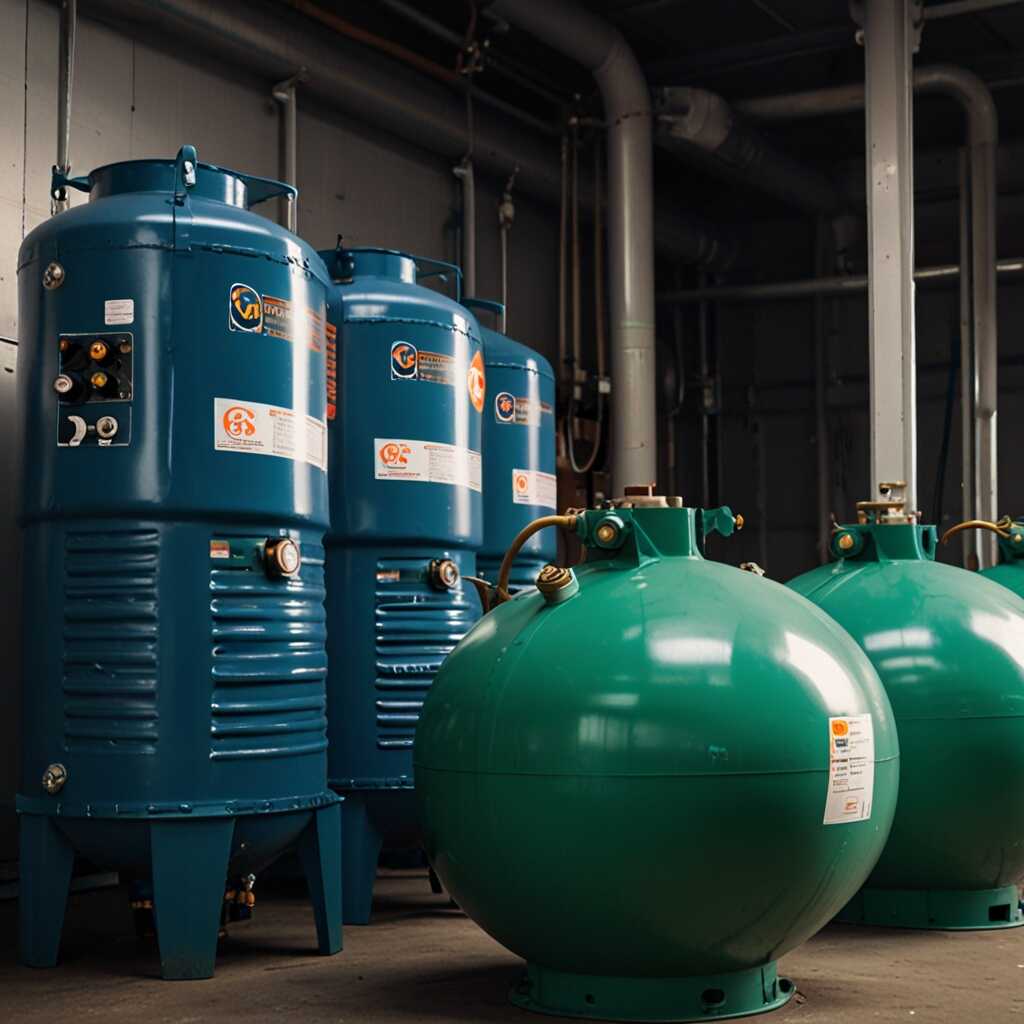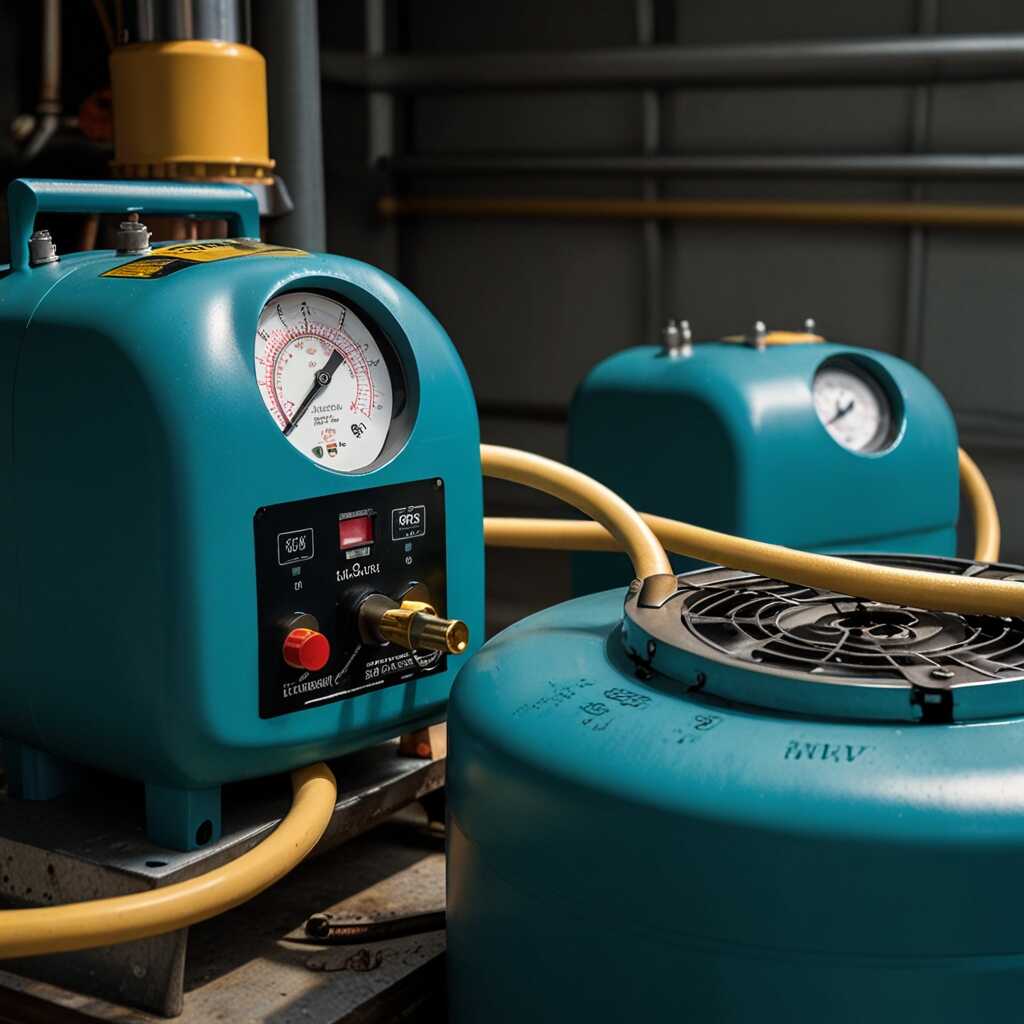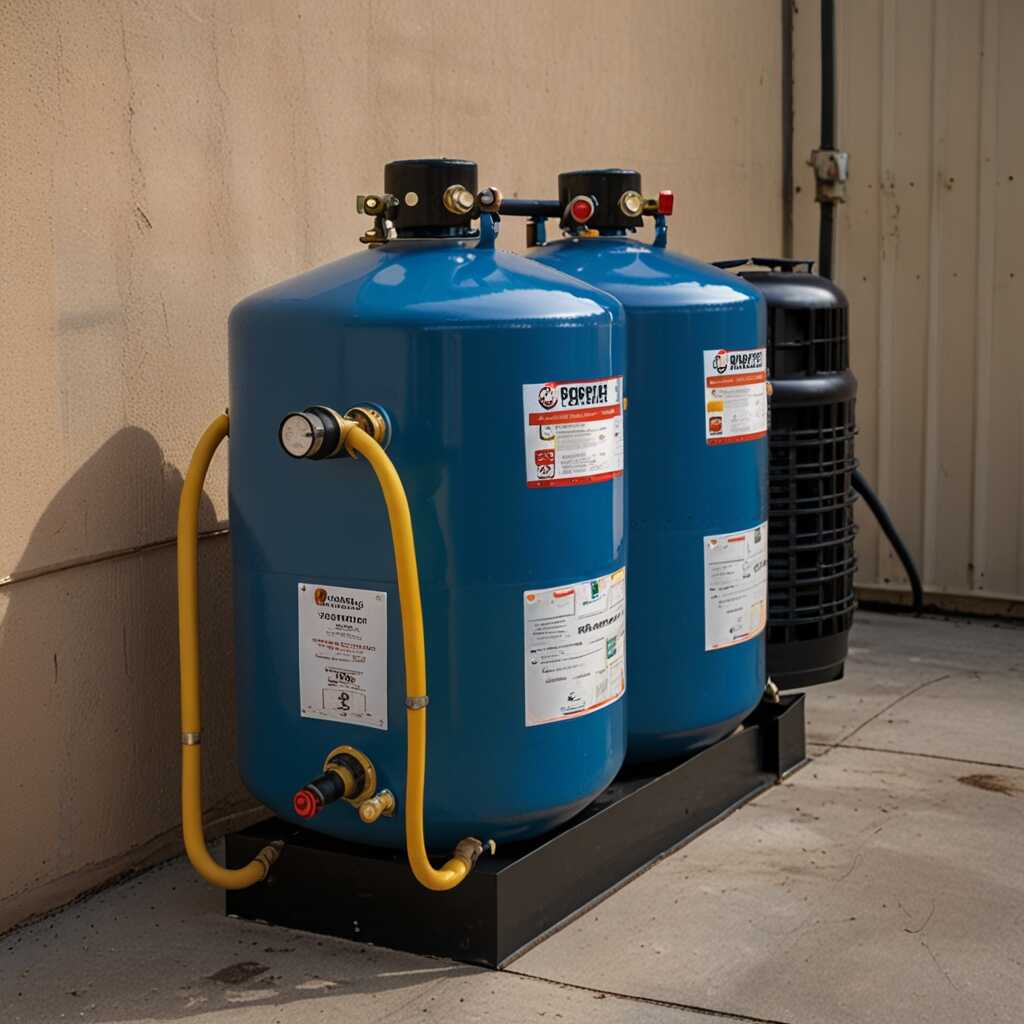Sealed bearing motors are a compelling choice for refrigerant recovery due to their reduced maintenance needs. These motors operate efficiently with less wear and tear, making them ideal for HVAC systems. Refrigerant Recovery Pro highlights how the durability of sealed bearing designs minimizes downtime and maintenance costs. Choosing the right motor can enhance operational efficiency and ensure compliance with industry standards.
Introduction to Sealed Bearing Motors in HVAC Systems
Sealed bearing motors are essential components in HVAC systems. These motors are designed with sealed bearings that prevent dust and moisture from affecting their performance. This design makes them more reliable than traditional open-bearing motors. Sealed bearing motors also require less maintenance over time. Often, sealed bearing motors have a longer lifespan, ranging from 15 to 20 years under normal operation. Users find that the reduced frequency of maintenance results in cost savings and enhanced efficiency in their HVAC systems. Sealed bearing motors provide various advantages, including impressive durability and the ability to operate in challenging environments.
Advantages of Sealed Bearing Motors Over Traditional Motors
Sealed bearing motors offer several advantages compared to traditional motors in HVAC applications. They are designed to withstand harsher conditions, including humidity and dust exposure. This ability helps prevent common issues such as corrosion and bearing wear, enabling them to maintain reliable performance. Additionally, sealed bearing motors enhance energy efficiency, which is crucial for cost-effective HVAC operation. Experts recommend these motors for their reduced maintenance needs, translating to less downtime and greater operational reliability. Sealed bearing motors have been extensively reviewed and tested within the HVAC community, leading to superior results in long-term performance.
Maintenance Benefits of Sealed Bearing Motors Explained
Sealed bearing motors offer significant maintenance advantages, including reduced downtime and extended service intervals. These motors help eliminate dust and moisture, ensuring reliability and optimal performance. Users can expect to perform maintenance less frequently than with traditional motors. Tests have shown that sealed bearing motors can maintain quality performance for longer periods, minimizing the need for repairs. Comparing maintenance schedules, sealed bearing motors can often require service every 1-2 years, compared to every 6-12 months for standard motors.
Understanding the Design Benefits of Sealed Bearing Motors
The design features of sealed bearing motors enhance their reliability and efficiency in refrigerant recovery applications. These motors are built with protective seals that prevent contaminants from entering critical components. This design significantly reduces wear and tear, leading to longer operational lifespans. The materials used in sealed bearings are resistant to environmental influences, ensuring quality performance in various settings. Regular testing and reviews confirm that sealed bearing motors consistently outperform traditional models, making them an excellent investment for HVAC professionals. Refrigerant Recovery Pro provides expert guidance to help users select the best options for their needs.

Comparing Performance of Sealed vs Traditional Bearing Motors
Sealed bearing motors provide increased reliability compared to traditional bearing motors. They are designed to be more resistant to dust, moisture, and other contaminants, which enhances their durability and performance. Maintenance costs are lower for sealed bearing motors, as they do not require regular greasing or lubrication like traditional motors. In terms of lifespan, sealed bearing motors can last significantly longer, often outlasting traditional motors by a factor of two to three, especially under consistent operational conditions.
Understanding Efficiency Metrics in Sealed Bearing Motors
Sealed bearing motors deliver excellent efficiency metrics, enabling HVAC systems to operate effectively over time. Sealed designs minimize friction, improving performance while reducing energy consumption. They can handle higher loads without overheating, contributing to overall system reliability. Testing has shown that sealed bearing motors outperform traditional motors in various conditions. Consequently, they are the preferred choice for many HVAC professionals looking for reliable and high-quality solutions in refrigerant recovery applications.
Numerical Data on Maintenance Efficiency
- Sealed bearings typically extend motor lifespan by 30% compared to traditional designs.
- Maintenance costs can reduce by 50% with sealed bearing models.
- Up to 80% less frequent servicing is required for sealed bearing motors.
- Sealed bearing motors can operate effectively for 10,000 hours without issues.
- Standard motors need maintenance every 500 hours, while sealed types extend intervals significantly.
- Time spent on repairs drops by 70% with sealed bearing technology.
- Users report a 40% increase in productivity due to fewer maintenance interruptions.

Factors Contributing to Motor Longevity and Performance
The longevity of refrigerant recovery motors is significantly impacted by various environmental conditions and usage patterns. Humidity and temperature extremes can introduce stress, affecting the reliability and durability of motors. Proper ventilation and storage extend motor life. Frequent use of motors for heavy-duty tasks or improper handling can lead to faster wear and diminished performance. Research indicates that regular maintenance and careful monitoring enhance motor reliability, ensuring efficient operation. Users should focus on proper cleaning and routine checks to protect their investment. Average lifespan estimates for well-maintained sealed bearing refrigerant recovery motors are typically around 10 to 15 years, depending on usage and care.
Understanding Usage Patterns for Optimal Motor Performance
Understanding how usage patterns influence sealed bearing refrigerant recovery motors is essential for achieving optimal performance. Motors that are frequently engaged in demanding tasks can experience accelerated wear, resulting in reduced efficiency. Selecting the right motor for specific tasks can ensure reliability and effectiveness. Additionally, using motors within their design parameters is critical. For example, sealed bearing motors excel in environments with high humidity due to their efficient sealing features. Proper training and experience on operating these motors help technicians recognize when performance drops, enabling them to make timely adjustments. Evaluating the workload and closely monitoring performance data will provide insights to maintain efficient operational standards.

Essential Maintenance Practices for Refrigerant Recovery Motors
Key maintenance practices for sealed bearing refrigerant recovery motors include routine checks of electrical connections, inspecting for leaks, and cleaning the motor housing. Essential tools for these tasks include multimeters, wrench sets, and vacuum gauges. It is advisable to perform routine maintenance every three to six months to ensure performance efficiency. Timely checks enhance reliability and help prevent costly repairs.
Tools and Components for Motor Maintenance
Maintaining sealed bearing refrigerant recovery motors requires specific components and tools. Key tools include a multimeter for electrical testing, a torque wrench for secure fittings, and cleaning supplies like brushes and compressed air for keeping the motor clean. Regularly inspecting components such as the motor casing, seals, and bearings will ensure optimal performance. Focus on selecting tools that enhance reliability and durability. High-quality tools prevent unnecessary wear on HVAC systems and extend motor life significantly.
Advantages of Using Encased Bearings
- Sealed designs eliminate dust and moisture intrusion effectively.
- Reduced friction in these motors enhances energy efficiency.
- Less frequent repairs mean lower downtime during projects.
- This technology generally leads to quieter operation, reducing workplace noise.
- Lubrication remains intact longer, ensuring smooth performance.
- Resilience to harsh environmental factors makes them ideal for HVAC systems.
- Operating temperatures are consistently lower, extending motor life.

Understanding the Costs Associated with Motor Maintenance
Maintaining sealed bearing motors typically incurs lower costs compared to traditional motors. Sealed bearing technology enhances performance reliability and reduces the need for frequent repairs. Common costs for traditional motor maintenance include bearing replacement, lubrication, and potential downtime. These costs can add up to hundreds of dollars annually. HVAC professionals will find that sealed bearing motors require less frequent maintenance due to their durable design, ultimately leading to long-term savings. Research shows that HVAC operators can save significantly on annual maintenance, possibly exceeding $300 per motor, depending on usage and conditions.
Factors Influencing HVAC Motor Maintenance Costs
Several factors influence maintenance costs for HVAC motors, particularly between sealed and traditional options. Sealed bearing motors require less routine upkeep due to their robust design, which includes protection against moisture and dirt. This design ensures greater efficiency over time, minimizing the likelihood of repairs or replacements. Maintenance routines become simpler, making it easier for HVAC technicians to complete tasks quickly. The reduced frequency of maintenance checks directly correlates with lower labor costs and minimal downtime. By choosing sealed bearings, professionals can enhance overall system reliability and achieve cost-effective, long-term operations.
Examples of Sealed Bearing Motors in Refrigerant Recovery Applications
Sealed bearing motors are frequently used in refrigerant recovery systems across various HVAC applications. For instance, a common model is the R-410A recovery unit, which uses sealed bearing motors for efficient operation in high-pressure scenarios. These motors are designed to minimize wear over time, leading to reduced maintenance requirements. In comparison to traditional motors, sealed bearing options show greater efficiency in both residential and commercial refrigeration systems. The sealed design ensures reliability, preventing contaminants from entering the motor and enhancing overall performance. According to testing data, these motors can last anywhere from 10 to 15 years with proper usage.
Performance Advantages of Sealed Bearing Motors in Refrigerant Recovery
Sealed bearing motors offer numerous performance advantages in refrigerant recovery applications. They are engineered for durability, ensuring consistent operation even under demanding conditions. The sealed design prevents dust and moisture from impacting motor functionality. This makes them ideal for environments where refrigerants are frequently cycled. With a proven ability to handle pressures in both low- and high-capacity systems, these motors demonstrate superior operational efficiency. Facilities using sealed bearing motors report fewer maintenance issues, further enhancing the reliability of refrigerant recovery processes. Comprehensive reviews highlight their impressive performance and longevity compared to non-sealed options.
Brands and User Demographics in Refrigerant Management
- Popular brands include Copeland and Emerson, known for reliable performance.
- Contractors prefer Copeland due to its easy setup and versatility.
- Emerson motors target larger commercial projects needing energy efficiency.
- Both brands excel in support, offering comprehensive guidance for users.
- HVAC technicians favor Copeland for its durability in residential systems.
- Emerson’s technology appeals to facilities focusing on sustainability.
- Students in HVAC programs often study these brands for real-world applications.
Upcoming Developments in Refrigerant Recovery Motor Technology
Recent innovations in refrigerant recovery motor technology focus on enhancing reliability and efficiency. New designs include advanced materials that improve durability and functionality. Leading companies like Copeland and Tecumseh develop cutting-edge systems with integrated smart features. These advancements streamline maintenance practices by providing real-time performance data. By 2025, an estimated 20 new systems will launch, promising better energy management and user-friendly maintenance protocols. Understanding these developments will help HVAC professionals stay informed and improve service quality.
Key Features of the Latest Refrigerant Recovery Motors
The newest refrigerant recovery motors offer impressive features that enhance HVAC efficiency. Many are designed with intelligent diagnostics and energy-saving mechanisms. These systems can handle various refrigerants, optimizing performance across different applications. Innovations focus on reducing noise and vibration, improving user comfort. Additionally, some motors boast easy integration with existing HVAC setups, simplifying retrofitting processes. Through ongoing testing and refinement, manufacturers ensure these systems deliver reliable output, making maintenance easier for technicians.